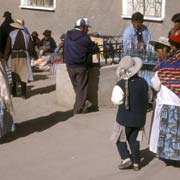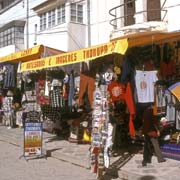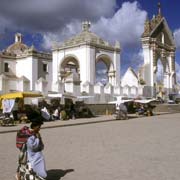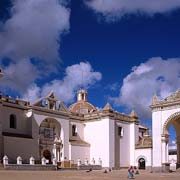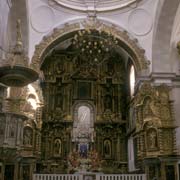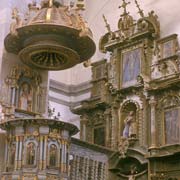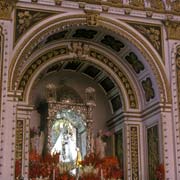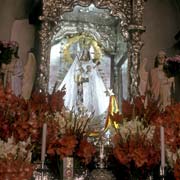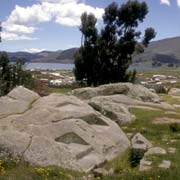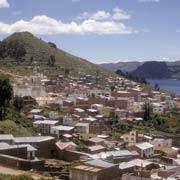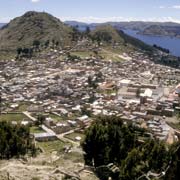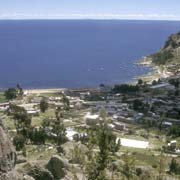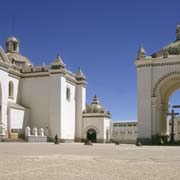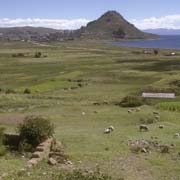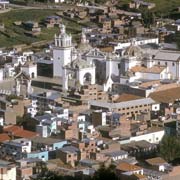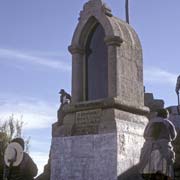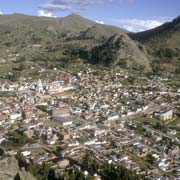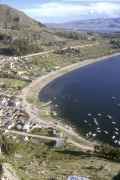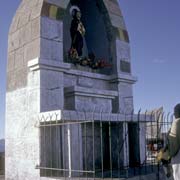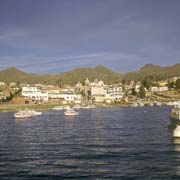Photos of Copacabana, on the shores of Lake Titicaca, Bolivia
Copacabana, on the shores of Lake Titicaca
Copacabana is the main Bolivian town of about 6,000 inhabitants on Lake Titicaca, the world’s highest navigable lake at an elevation of 3,820 metres. Its name is derived either from the Aymara words “Kota Kahuana” (View of the Lake) or, more likely, “Kotakawana”, the god of fertility in ancient Andean mythology. This god was believed to live in Lake Titicaca. The present Basilica is built on the site of the main temple dedicated to Kotakawana: Copacabana was a sacred place even before the Spanish conquest.
you may then send it as a postcard if you wish.
The town is built between two hills, Cerro Calvario and Cerro Niño Calvario, on a peninsula south of Lake Titicaca. There are Catholic shrines on Cerro Calvario, with impressive views over the town, and Horca del Inca, actually a pre-Inca site thought to be an astronomical observatory built in the 14th Century on Cerro Niño Calvario or Quesasani. On the southeastern outskirts of Copacabana is a field of sculpted boulders known as the Inca Tribunal (Asiento del Inca), speculated by some to have been a meeting place for Inca priests.
The famous Moorish style Basilica or “Catedral” was built between 1605 and 1820 and contains the statue of La Virgen de la Candelaria. According to local legend, in 1576, some Inca fishermen were caught in a terrible storm on Lake Titicaca. As they prayed for help, the Virgin Mary appeared and led them to safety. It is claimed that in 1582 the Virgin of Copacabana appeared in a dream to Tito Yupanqui, the grandson of Inca ruler Manco Capac. He was so affected by this vision that he set out to Potosí (then one of the most important art centres in the world) to learn to sculpt and then carved a statue of the Virgin from the wood of a maguey cactus. He carried her all the way from Potosí to Copacabana and placed her in an adobe chapel in 1583. The Spanish extended the chapel in Moorish style in 1619. The statue soon gained a reputation throughout Bolivia and Peru for working miracles. The present Basilica de la Virgen de Candelaria was completed in 1805.



